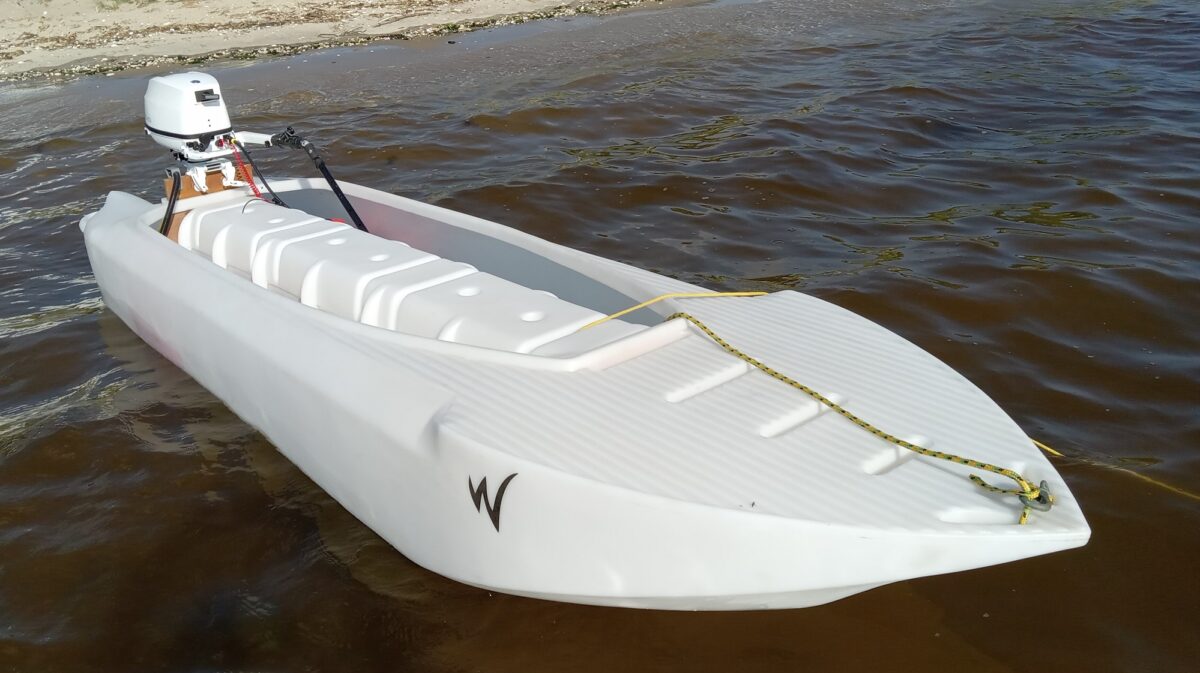This short review of recent kayak design articles highlights some aspects of the common fishing kayak.
The first, and probably most striking thing about the typical SOT, sit-in or hybrid fishing kayak that’s offered in stores or online is its size – It is huge, and consequently heavy and hard for one person to carry and car top, as well as hard to paddle, especially in wind and current.
Those kayaks seem to have crossed the line between a kayak and a boat, or a skiff, since practically speaking they require transportation by trailer. And indeed, some manufacturers already refer to their larger fishing kayak models as boats, not because of their performance or some additional functionality, but due to their size.
Needless to say that this fact alone is evidence that such kayaks defy the purpose of kayak fishing.
The second most striking aspect of those large-size fishing kayaks is the dysfunctional clutter in their cockpit and deck that seem so crowded with fishing accessories and just ‘stuff’ that the angler sitting or attempting to stand in them literally has no room to do so. These objects range in size, from small cup holders to large size lean bars, and their presence in the kayak’s cockpit is not only unnecessary to the angler, it is clearly counterproductive.
The third interesting thing about these larger than life (I.E. too large for real people to fish from in real life) kayaks is the absence of hydrodynamic design in them: They are not even close to conform to basic boat design standards or even to common sense: Not only are they much too wide for their length, which slows them down and makes them track poorly and require a cumbersome rudder – their underside features a variety of design elements that are extremely counterproductive as fare as speed is concerned. Such elements can be multiple scupper holes and molded-in channels, fins, and even a skeg.
Ironically, none of these accessories, systems and design elements offers a real solution to the fundamental problems that the average angler experiences when using them –
These unsolved problems in these common fishing kayaks are:
1. Poor ergonomics, meaning mainly lack of comfort, early fatigue and back pain, as well as bad bio-mechanical design, which the angler feels as a restricted range of motion in both paddling and fishing. The new beach seat style kayak seats are obviously a botched attempt to address this issue, as foam filled seats failed to do so in the past.
2. Insufficient stability albeit the fact that these fishing kayaks are extremely wide.
3. Wetness as a result of the kayak offering too little or no free board, and scupper holes that conduct water upward onto the deck and cockpit, a problem annoying to a point that manufacturers have to offer scupper plugs…
4. These kayaks are as wide as canoes and as as sluggish and unfit for paddling in strong wind, waves and other real world factors.
5. With all the stuff tucked on board a typical SOT, sit-in or hybrid fishing kayak, such craft still scores very low in terms of storage, as one or more hatches address neither the need for enough storage space nor for adequate accessibility to the gear stored inside.
In contrast, the Wavewalk 500 series of twin hull kayaks offers a high level of fishability in all these factors.
References –
More is less in your fishing kayak’s cockpit – Too much stuff and too little fishability
